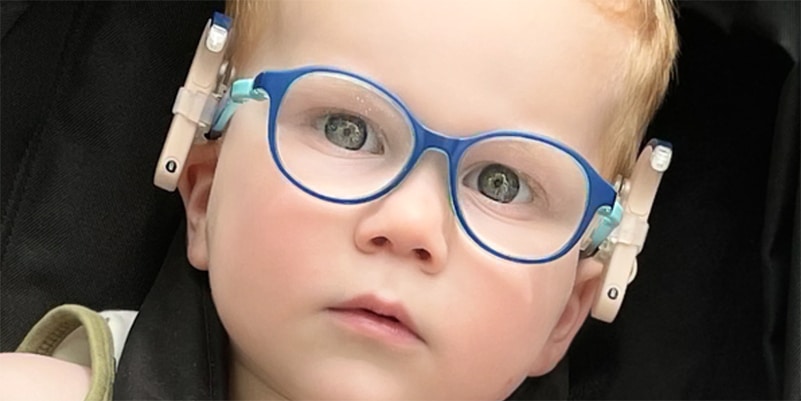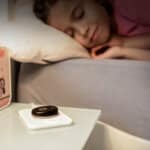Wearing Options for Children With Glasses and Hearing Implants

Does your child need to wear eyeglasses? Wearing glasses and a hearing implant processor behind the ear can lead to issues with keeping both devices on. This is particularly frustrating if you’re trying to increase the amount of time your child listens with their audio processor daily.
For routine care, consider consulting a pediatric optometrist—an eye doctor who provides comprehensive eye exams and regularly fits glasses for young children. A child-friendly professional can help minimize the stress of future eye exams and offer eyewear options that are durable and comfortable for little ears.
When it comes to your child’s frames, look for eyewear that suits active play, and the occasional fall or tumble. A secure but comfortable fit means that:
- Not too much weight is placed behind the ear
- The outer ear is not overly bent or stretched
- The skin underneath can remain somewhat dry, preventing chafing or abrasions
And for maximum comfort, ask your optometrist about frames that are:
- Lightweight
- Made of a soft highly flexible material (e.g., plastic, silicone)
- Have no metal parts
- Include an adjustable or removable head strap
Before you commit to buying glasses, think about how your child could wear their frames. Comfort is a must for long-time use and only you and your child can decide which wearing options work best for your daily routine. This process can take time and learning through trial and error. As you experiment with different options, watch for signs that the fit of either device isn’t optimal, including:
- Redness or soreness behind the ear
- Increased sweating or moisture behind the ear
- Frequently removing their eyewear, implant(s), or both
To help you get started, here are a few wearing options that suit children of different ages:
1. Consider Alternate Eyewear Options
For children of any age, the temple, or arms of the eyeglass frame, can be replaced with a fixed head strap so that the audio processor may sit freely behind the ear.
2. Lower the Profile
While you may not be able to swap out audio processor(s) as easily, when it comes to eyewear, you have choices. Older children and adults with implants often prefer glasses that have extremely thin or wire temples to minimize the profile of their frames behind the ear.
3. Get Creative
Both audio processors and eyeglasses have wearing options that can be arranged in a variety of ways using accessories. Check out two-year-old Jameson’s audio processors, which are attached to his flexible frames with ActiveWear, allowing him to listen while keeping busy throughout the day. This wearing option allows his hearing devices to be at ear level, mimicking the intended position behind the ear. According to his Mom Lindsay, Jameson is “doing well, and he is keeping all hardware on. It’s been a great experience so far”. Bear in mind that Jameson’s set-up only works when he’s wearing his glasses—so it might not be the ideal solution for your child.

4. Go Off-the-Ear
For infants or toddlers, experiment with attaching the audio processor to their clothing using a clip like ActiveWear or BabyWear. Although, try to move to an ear level wearing option as soon as the size of the ear allows so that the hearing device (and their microphones) is in the intended wearing position. If you’ve yet to select your child’s audio processor, older children might prefer a single-unit, off-the-ear audio processor, like RONDO 3.
Thanks for your message. We will reply as soon as possible.
Send us a message
Field is required
John Doe
Field is required
name@mail.com
Field is required
What do you think?
The content on this website is for general informational purposes only and should not be taken as medical advice. Please contact your doctor or hearing specialist to learn what type of hearing solution is suitable for your specific needs. Not all products, features, or indications shown are approved in all countries.


